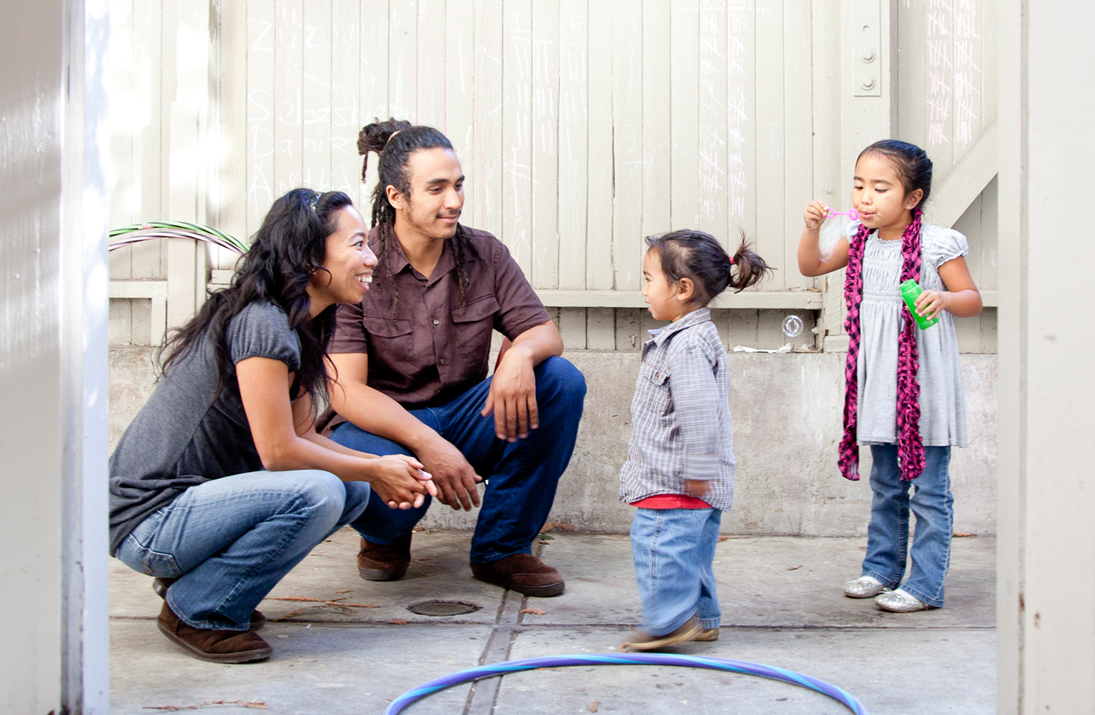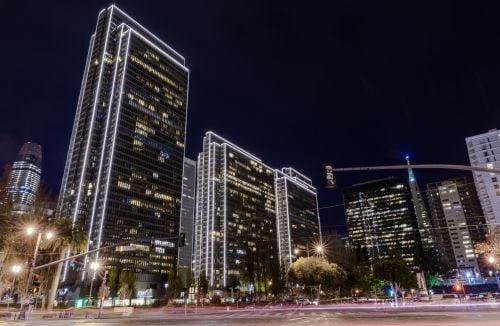The Gartland Fire mural
I went to Entwined recently, an installation in Golden Gate Park that answers the pressing question, “What would it look like if b-roll from Avatar was rendered in 8-bit?” It led me to think about what more public art could do to confront the public and ask questions that might be a little more profound than that.
This is San Francisco, so one doesn’t have to travel far to find a counter example. In the 1970’s, the Mission District was being rapidly gentrified, and arson fires were not uncommon. One of the worst took place in 1975 on the corner of Valencia and 16th, at a building named The Gartland Apartments. On the night of Dec 12th, someone poured gasoline into the main stairwell and lit it. As many as 25 people died, although only 14 bodies remained complete enough to count.
Activists took over the hole in the ground that remained, christened “The Gartland Pit”, and refused to allow any new development that would allow profit from this crime. The pit became a site for punks and artists to agitate, and murals went up.
To commemorate the Gartland, a mural was commissioned as part of a dance performance on the side of a brutalist MUNI parking lot at 15th and Folsom. In the mural, the tragedy of the fire and rebirth caused by dedicated activism are celebrated. The mural is also a response to the gentrification that was rapidly changing the Mission district in 2002.
Of course, nothing in San Francisco ever has fewer than three degrees of complication. The artist who made this mural, Josef Norris, also worked with school children to design a Fell St. mural project. He was sentenced to 6 years in prison for child pornography in 2012.
Schools in San Francisco are the home to a lot of murals. Some of them are full of lighthearted whimsy, and some of them are painted by Russian Communists and depict the ugly reality of slavery and the oppression of first peoples. Such is the case in the now-deleted mural in Washington High School, painted by famed muralist and assistant-to-Diego-Rivera Victor Arnautoff.
Stepping over bodies
Millions of visitors to SF know Arnautoff from his mural on the inside of Coit Tower. Called “City Life”, this mural was also criticized by contemporaries because it showed crime and indifference to suffering, which are not uncommon themes in social realism.
Recently, of course, there has been a brouhaha about Arnautoff’s mural in Washington High. As Robert Cherny writes in “Victor Arnautoff and the Politics of Art,”
Arnautoff placed slaves and working people in the center of several of the panels, rather than Washington, and in the words of Arnautoff’s biographer, “the mural makes clear that slave labor provide[d] the plantation’s economic basis”, at a time when high school history classes “ignored… that the nation’s founders… owned other human beings as chattel”. Similarly, Arnautoff placed the body of a dead Native American at the feet of pioneers, “challenging the prevailing narrative that westward expansion had been into largely vacant territory waiting for white pioneers to develop its full potential”.
Last year, people became upset about the murals, and the school board decided to destroy them. Later, they changed their mind and simply ordered them covered up, at a cost of $815,000. There is no indication that Arnautoff was interested in child pornography.
ABCs and ACAB
Over at another school, Marshall Elementary on 15th and Capp, there is a mural of the more whimsical variety. Painted in conjunction with 1:AM SF, this mural has the normal tropes for a school mural: pencils, math, dinosaurs, anti-cop messaging and equations. I may be leaping to conclusions, but I believe that is the first time I’ve seen a primer book with “a cab” as the example text.
I reached out to the president of the school board and 1:AM SF, asking if they had meant to put a message about police abuses in the center of the mural. As of press time, neither of them have responded. Given that the mural was partially funded by such well-known advocates for police reform as Google and Deloitte, I think the answer is obvious.
There are hundreds of murals and pieces of public art all over the city, and many of them probe complicated and difficult ideas. Some of them, like the giant purple anal beads that Uber installed in front of their 3rd St. offices, just probe. As we all begin to emerge, blinking, from this stupid pandemic, it’s a good time to look around and learn something from the art.
Uber knows where you can stick it.
The post San Francisco’s Sharp and Subversive Public Art appeared first on Broke-Ass Stuart's Website.







